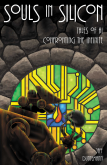Like it says. After a few days of looking at different Dell machines online, I went out and bought a Dell ECT1250 mini-tower. Once I got it home and set it up, it took an hour or two to update its pre-installed Windows 11. No big deal. The big deal was that it had no trouble with my Samsung 214T, which is no longer my primary monitor and is now on my tinkering desk and not my computer table. The ECT1250 detected the 1600 X 1200 resolution and set it as its display resolution.
So what happened before? I don’t know. Really. There may have been something wrong with the first machine I brought home. It doesn’t matter. I have the 27” widescreen now and the 214T will soon be in the closet as a spare.
I did backups on my main machine and Carol’s machine, and then took a deep breath, found the Windows Update link on her machine, and clicked it. Again, it took a few hours to download the new Windows and configure it. But this time, it detected Carol’s 4:3 monitor without any fuss. Her monitor is the slightly older Samsung 213T, which I bought in 2006 and used for a year or so before I bought the 214T. Apart from the 213T being made of a different color plastic, the two monitors are functionally identical.
So why did the smaller Dell machine not talk to the 214T? I have only one theory: I raised the 214T from the dead ten or twelve years ago when several of its its electrolytic capacitors croaked. This was not an isolated problem. (Does anybody else remember it?) I thought I was out a monitor, then after doing some research online, bought a capacitor repair kit and literally replaced all the monitor’s electrolytics. This didn’t seem to have any adverse effects on the 214T, but it’s possible that I winged something on the main circuit board while soldering in all those caps.
Or maybe it was evil spirits. Who knows? Doesn’t matter. The 214T may or may not ever be used again.
There’s one additional element in our move to Win 11: Open Shell. This is (now) an open-source utility that makes the Start menu look more like the one on Windows 7. It used to be called “Classic Shell” but then its original creator open-sourced it. Carol’s machine had Open Shell installed, and upgrading her desktop to Win 11 magically updated Open Shell to its latest release, which has no trouble with Win 11.
So although I’m no fan of Windows 11, I think of it as a solid product (security and performance-wise) in a bad wrapper. Most of the time I use Windows I’m not looking at the wrapper, but at the software that I use to do what I have to do on a daily basis. I got used to Win 10. I may grumble but I’ll get used to 11 as well. And it was a good excuse to buy a better machine.











